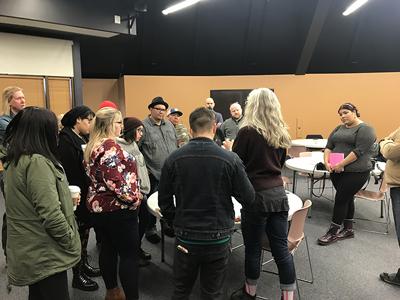Project to create 3D models of Blackfoot objects

Ian Dawson, co-director of the Critical Practices Research Group, Andy Jones, University of Southampton archaeology professor and Louisa Minkin, MA Fine Art course leader at Central Saint Martins, are collaborating on an ambitious project that will provide virtual access to historical Blackfoot objects held in museums.
Working with team of University of Lethbridge (Canada) researchers and Blackfoot Elders, Dawson, Jones and Minkin aim to create detailed 3D models of non-sacred Blackfoot objects held in British museums. Blackfoot approaches to knowledge emphasize the importance of caring for and sharing knowledge and, in order to adhere to their protocols and priorities, the project will be directed by Blackfoot Elders.
The research project will begin with Blackfoot Elders and students visiting the UK, in order to produce digital images of non-sacred objects in the British Museum, The Museum of Archaeology and Anthropology in Cambridge, and the Horniman Museum in London. This article from the Horniman Museum & Gardens blog gives an idea of the kinds of objects held in the collections. The research team will produce web-based prototypes featuring the digital models to reunite the objects with their culture. Next, the researchers will use digital tools, art-based public engagement and hyperlocal network technologies (for areas with limited access to high-speed Internet) to allow Blackfoot people to have immediate access and interact with the historical objects and their associated knowledge. Team member Dr Josie Mills, director and curator of the University of Lethbridge Art Gallery explains: ‘Our goal is to support sharing knowledge about how Blackfoot objects were made and to allow young artists to learn about historical techniques and materials. We will make images of everyday items which we can share with a wide audience because these do not have protocol restrictions.’
In the final phases, the researchers will ensure the objects become part of the Blackfoot Digital Library website, as well as organize exhibitions and public programming to engage people with the knowledge held by the objects. Participants in the project will gain skills in digital media technologies—an area that needs more Indigenous voices. Indigenous youth will be involved in multifaceted workshops directly connected to their culture, creating an entry point for further learning and engagement.
The project has receivedsupport from the New Frontiers in Research Fund.